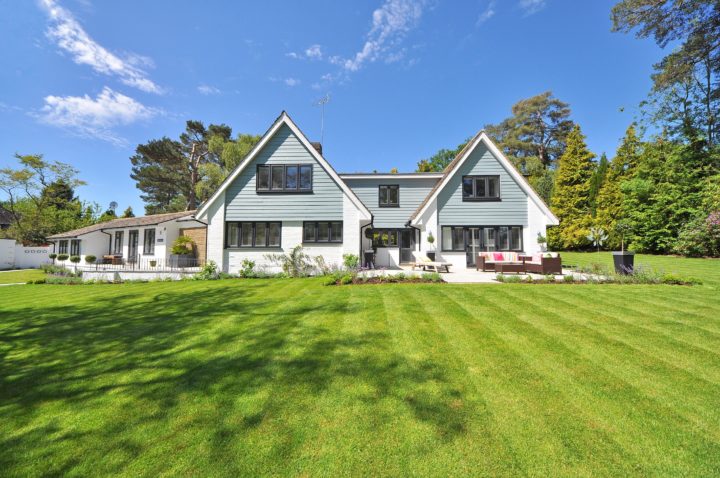With energy bills soaring, it’s time to consider making changes that can reduce the carbon footprint of your home, office or business. Out of the many ways you can modify buildings to be more energy-efficient, installing proper insulation is the most effective one. It’s not only a cost-effective way to reduce overall heating and cooling costs in winter and summer but also contributes towards healthy living and working quarters throughout the year. Different insulation options, like those provided by this polyurethane foam manufacturer, will increase comfort and warmth levels, but also repel moisture buildup, keep flames at bay during fires, and add to the structural integrity of a building.
As insulation products are evolving, so are consumer habits. There is a gradual shift from traditional insulative solutions, like mineral wool, spray foam and fibreglass batts, to insulation boards. These not only have higher levels of thermal resistance, or R-values, but have favourable properties that allow them to be used in areas with high moisture exposure, like external wall and roofing applications, or where rigidity is required, like flooring.
The Types of Rigid Board Insulation
Rigid boards are insulation solutions consisting of tightly packed or closed-cell foam. Materials include polyurethane, polystyrene and polyisocyanurate. The compact cell structure means they are better at retaining heat, are more durable and fare better in bad weather than open cell insulation, particularly spray foam.
EPS, Expanded Polystyrene, and XPS, or Extruded Polystyrene are some of the cheaper offerings. Polyurethane (PUR) and Polyisocyanurate (PIR) boards are preferred for their higher insulative properties, whereas optimal insulation is offered by the newest type of rigid insulation – phenolic boards.
What Are PIR Boards?
Polyisocyanurate, more commonly abbreviated to PIR, is a type of polyurethane rigid foam. Consisting of a closed-cell structure, PIR boards provide better insulation than similar PUR boards (due to more complex production processes) and much more than EPS and XPS boards. PIR rigid foam boards are up to 15 per cent more efficient in retaining heat inside your home or office, and almost twice as much as EPS or XPS boards for the standard sizes. This allows builders and homeowners to specify boards that are much thinner.
Insulation boards are commonly sold in standard sizes. Lengths are fixed at 2400mm and heights at 1200mm. What differs is thickness. PIR boards come in thinner variants, at 20,25,30, 40, 50 and 75mm where space is limited. For standard thickness you can find 100, 110 and 120mm PIR insulation boards on the market, and where space allows, boards up to 150mm.
Tightly assembled and installed thinner boards can be used one on top of the other to get comparable levels of thermal insulation as thicker boards. Insulated plasterboard, or 2-in-1 boards, consisting of a fused PIR and plasterboard, are good for lining internal brick walls. These will specify the thickness of both the PIR insulation board and plasterboard to help buyers decide what they need.
Why PIR Insulation Boards?
Polysio boards are becoming increasingly popular due to their value. They cover the middle ground in terms of price but offer similar properties to more expensive phenolic boards. When compared to other rigid foam boards, PIR boards have several advantages.
First, PIR boards have very high thermal efficiency rates, only being bested by phenolic boards. However, there’s no comparison between this and XPS or EPS. You would have to get much thicker polystyrene boards to achieve the same results. Sometimes, though, there’s just not enough space. Anyone insulating floors knows that space is the limiting factor in achieving those expected R-values.
Next, the combination of polyurethane, polyols and isocyanates, leads to boards that are at the same time dense and durable, yet lightweight. Polysio boards can bear high loads, for instance, on floors without deforming (and losing thermal resistance). The inherent strength of these boards means they increase overall structural strength in areas where they are used. This also allows PIR to be used in combination with other construction materials, like the plasterboard mentioned above.
The closed-cell structure is often aided with metal facer and backer materials, to prevent moisture. This makes PIR boards useful in roofing and external applications where high humidity and direct exposure to water can deteriorate other foam boards. Areas with PIR insulation will be less susceptible to mould or mildew as a result.
Boards with aluminium facers have high heat and fire resistance, retaining form up to 200°C. This is almost double that of other foam boards. Lastly, PIR insulation boards are eco-friendly, since no hydrocarbons (enemies of the atmosphere’s Ozone layer) are used in their production. They also need less energy to make, have little to no toxic substances, and can be recycled and reused.
So, Where Are PIR Boards Used?
The favourable properties make PIR boards one of the most versatile insulative materials. Because of the high resistance to moisture, PIR boards are used in roofing, in both flat or slanted roofs, and in combination with other materials. The backer materials can be used with fasteners and adhesives in sandwiched insulation builds.
Polysio boards are also popular in external wall sheathing, offering comparable durability to plasterboard, but with much higher R-values. Costs are also lower in internal wall insulation (in solid or cavity walls with timber framing), with thinner PIR boards more than adequate in reaching energy efficiency goals. Boards that are thicker, like 120mm PIR insulation, will provide higher thermal efficiency.
And, as mentioned, the high durability and strength, make PIR boards good in various flooring applications. This includes both concrete slab and suspended timber floors.
How to Properly Install PIR Boards
PIR boards are lightweight and easy to transport. When specified in thinner variants, transport times and fuel costs are lower for large-scale insulation projects.
The boards are easy to cut and shape with a simple trimming knife. Separate boards are designed to snap together, but adhesive tape can be used to achieve airtightness for higher energy efficiency and prevent heat loss. This also reduces moisture and smoke penetration. When used with other materials, PIR boards are often sealed with silicone sealant.
Boards are applied to surfaces clean of dust, oil and other contaminants to ensure better jointing. Properly installed PIR insulation will reduce heat loss, prevent drafts and buildup of mould and mildew and lower your energy use. Once installed, the boards should remain rot free and maintain their shape for the life span of the building.
















